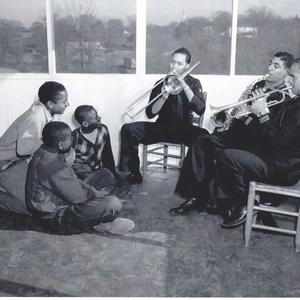Faith
Faith has always been a critical part of the life of Chapel Hill/Carrboro’s Black community. Prior to emancipation, enslaved people people worshiped in segregated sections of Chapel of the Cross, University Baptist Church, and other churches run by white residents. But Black church-goers quickly moved to found their own congregations where they could worship independently as soon as possible. Chapel Hill’s first Black church, St. Paul AME Church, was founded in 1864, closely followed by First Baptist Church in 1865. Hickory Grove Missionary Baptist Church was founded in 1877 and St. Joseph CME Church was founded in 1898. Other churches sprang up over time to serve different geographic areas and theological beliefs. These include Abundant Life Faith Ministry, Barbee’s Chapel Harvest Word Church, Cathedral of Hope Mission Church, Faith Tabernacle Oasis of Love International Church, First Church of God Christian Fellowship, Hamlet Chapel CME Church, Haw River Baptist Church, Mt. Zion Missionary Baptist Church, O’Bryant Chapel AME Zion Church, Second Baptist Church, Staunton Memorial CME Church, Terrell’s Creek Missionary Baptist Church, and White Rock Holy United Church.
While the ministers of these congregations are often their most celebrated church leaders, they should not overshadow the many laypeople who make each church a spiritual home for its members. Stewards, stewardesses, deacons, deaconesses, trustees, ushers, elders, youth program ministers, choir directors, and committee members all work tirelessly to keep Black churches thriving. From vacation Bible schools to Easter pageants and Christmas goodie bags, church events that run on the efforts of lay leadership and church members bring people together in celebrations of faith and community.
Over the years churches have provided spiritual nourishment and fellowship, but have also been critical to community activism and community caregiving. Black churches raised funds to bail out Civil Rights activists and provided space for activist meetings and preparations. Many photos from marches and protests in Chapel Hill began with a rallying point in front of St. Joseph CME. Today, the Heavenly Groceries ministry at St. Joseph CME has fed hundreds of people and First Baptist Church has a thriving prison minsitry. The annual St. Paul Village Community Walk and 5k Run encourages exercise while raising funds for St. Paul Village, a mixed use development combining a new worship space, community amenities, and senior and affordable housing. Informally, local Black churches have offered prayer and care for members dealing with deaths in their families, illness, and other hardships and have led community efforts to care for people who are unhoused or hungry, and for those who are incarcerated.
Today, new neighbors in Northside, Pine Knolls, Tin Top and other historically Black neighborhoods bring their own faith traditions to the community. While many neighbors flock to Christian churches each Sunday, others celebrate their faiths in synagogues, mosques, temples, and other spaces, bringing diversity and new beliefs to the long-standing tradition of faith in community.
















































































